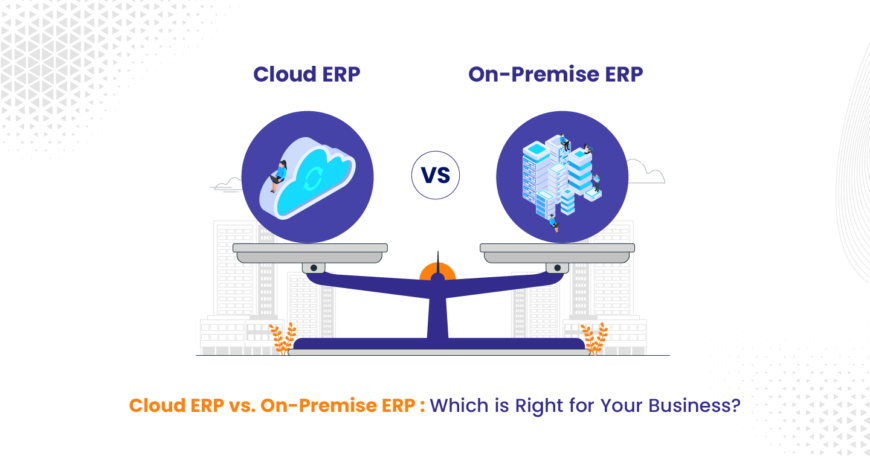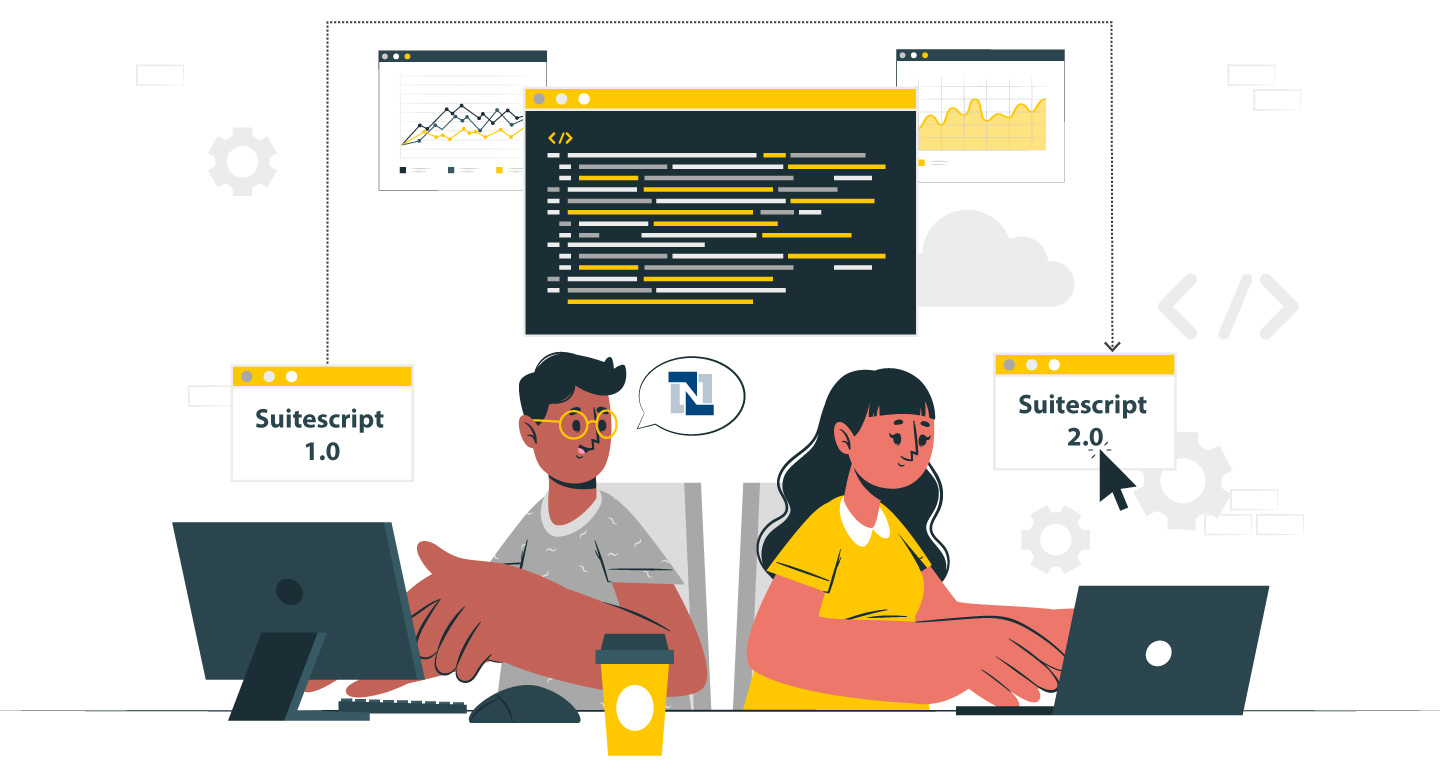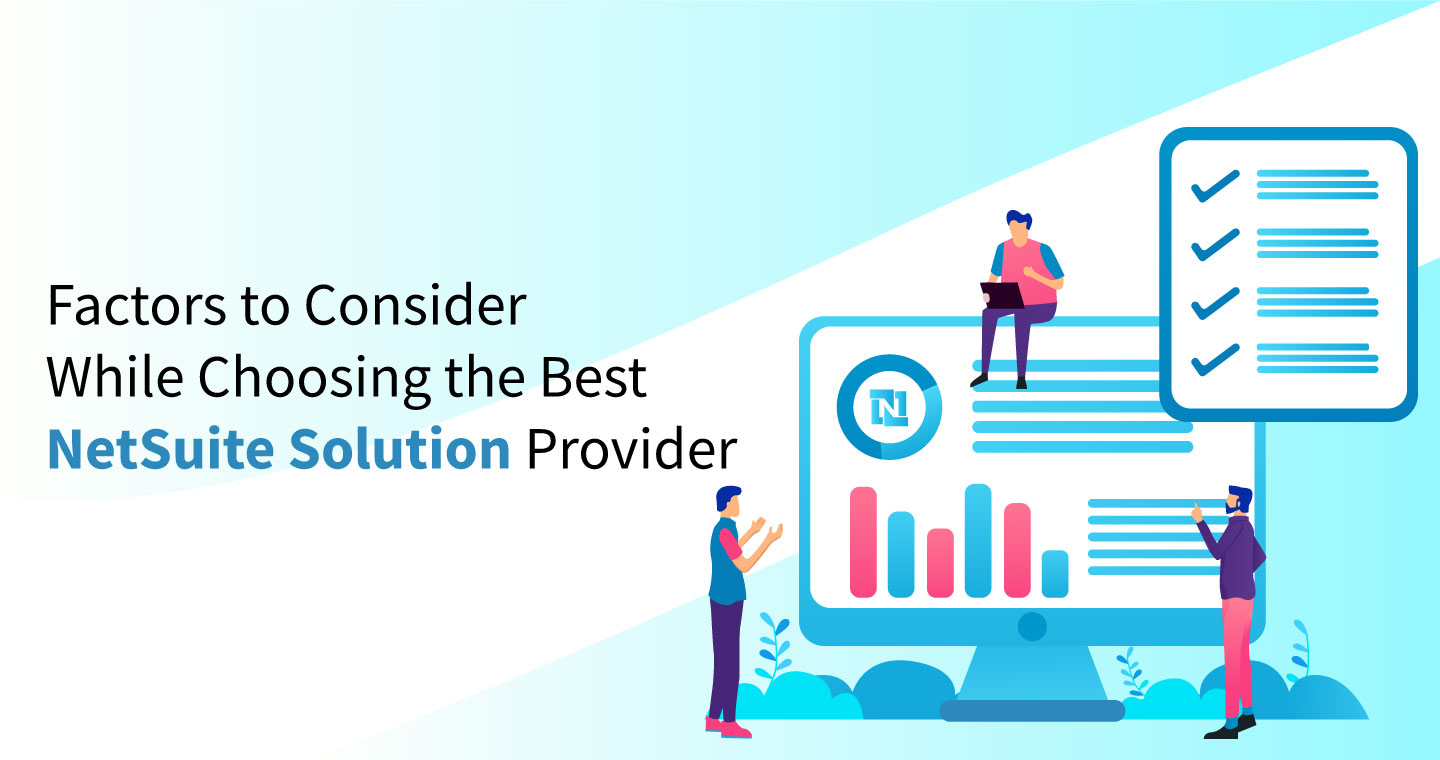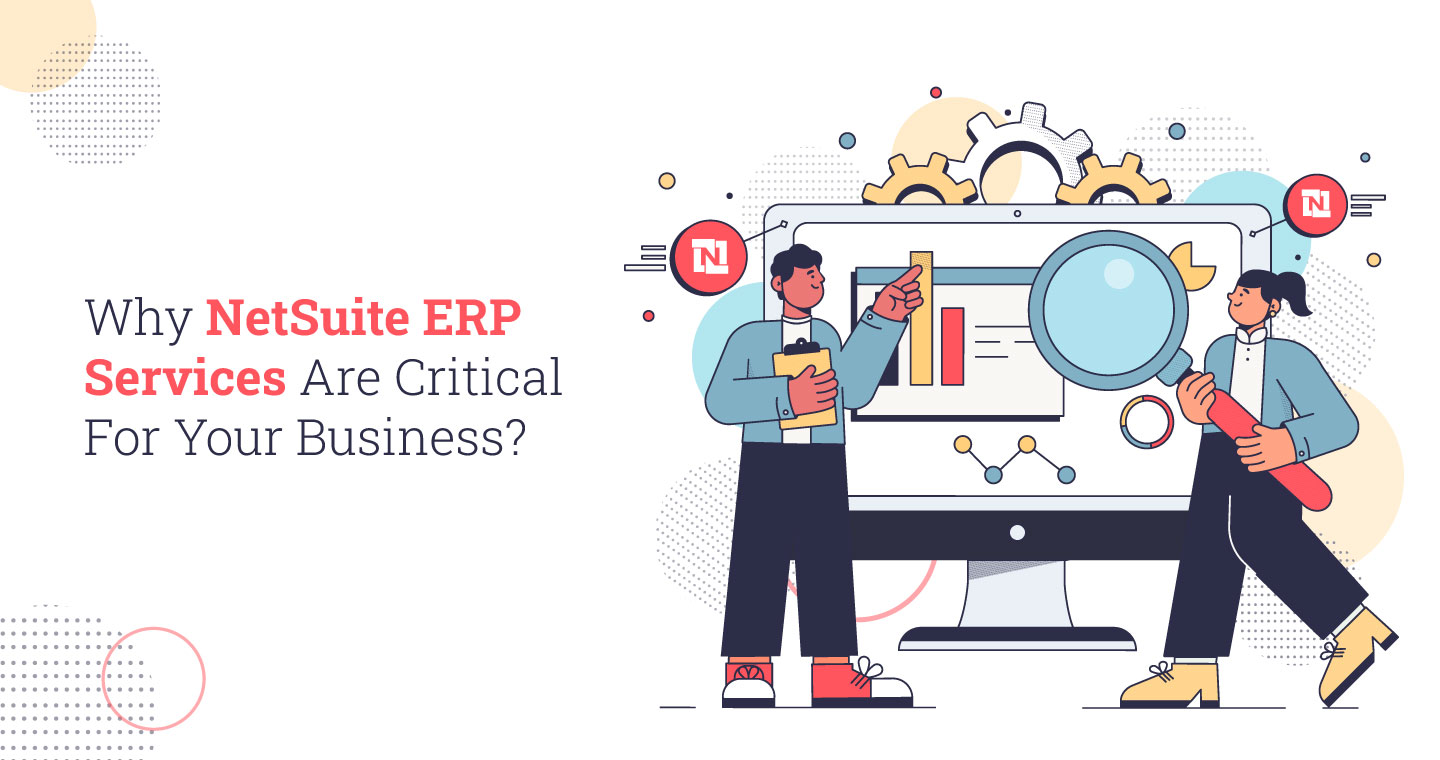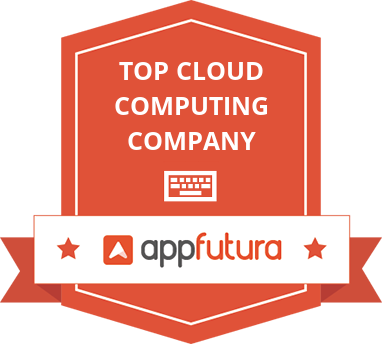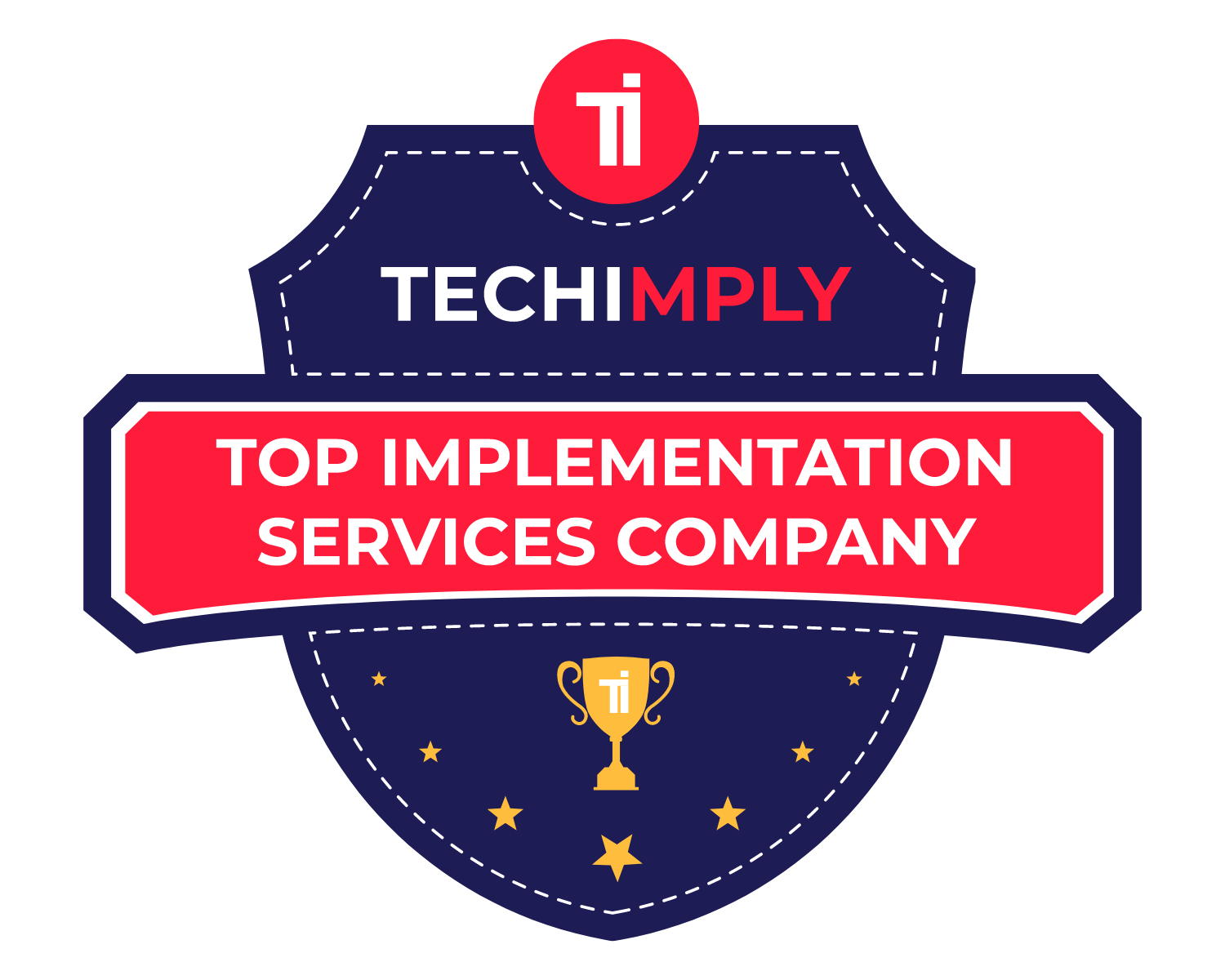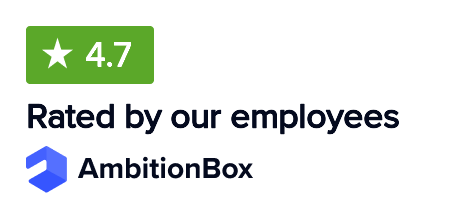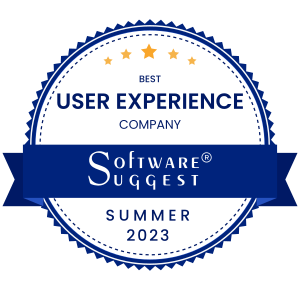In today’s dynamic business world, where efficiency and agility are essential for success, selecting a right ERP solution has become a necessity. Implementing a right ERP will boost productivity, streamline operation and drive tangible business benefits. In this blog, we will discuss crucial aspects of consideration between cloud and on-premise ERP solutions.
Let’s check out the differences while understanding what each of this software is.
Cloud ERP leverages the power of the cloud, delivering flexibility and accessibility. It operates through the Internet, eliminating the need for on-site infrastructure and offering seamless remote access. This makes it an ideal choice for businesses prioritizing scalability, rapid deployment, and cost-effectiveness.
On-premise ERP, on the other hand, relies on localized servers and infrastructure, providing organizations with full control over their systems and data. It caters to businesses with specific customization requirements, data sensitivity concerns, or established IT infrastructure.
In this article, we discuss the key differences between these two ERP systems to help businesses make informed decisions about which ERP system aligns best with their unique needs and strategic objectives.
Key Differences Between Cloud ERP and On-Premise ERP
These differences can help you decide which ERP system suits your business better, whether it’s like renting an apartment in the cloud or owning a house on your premises.
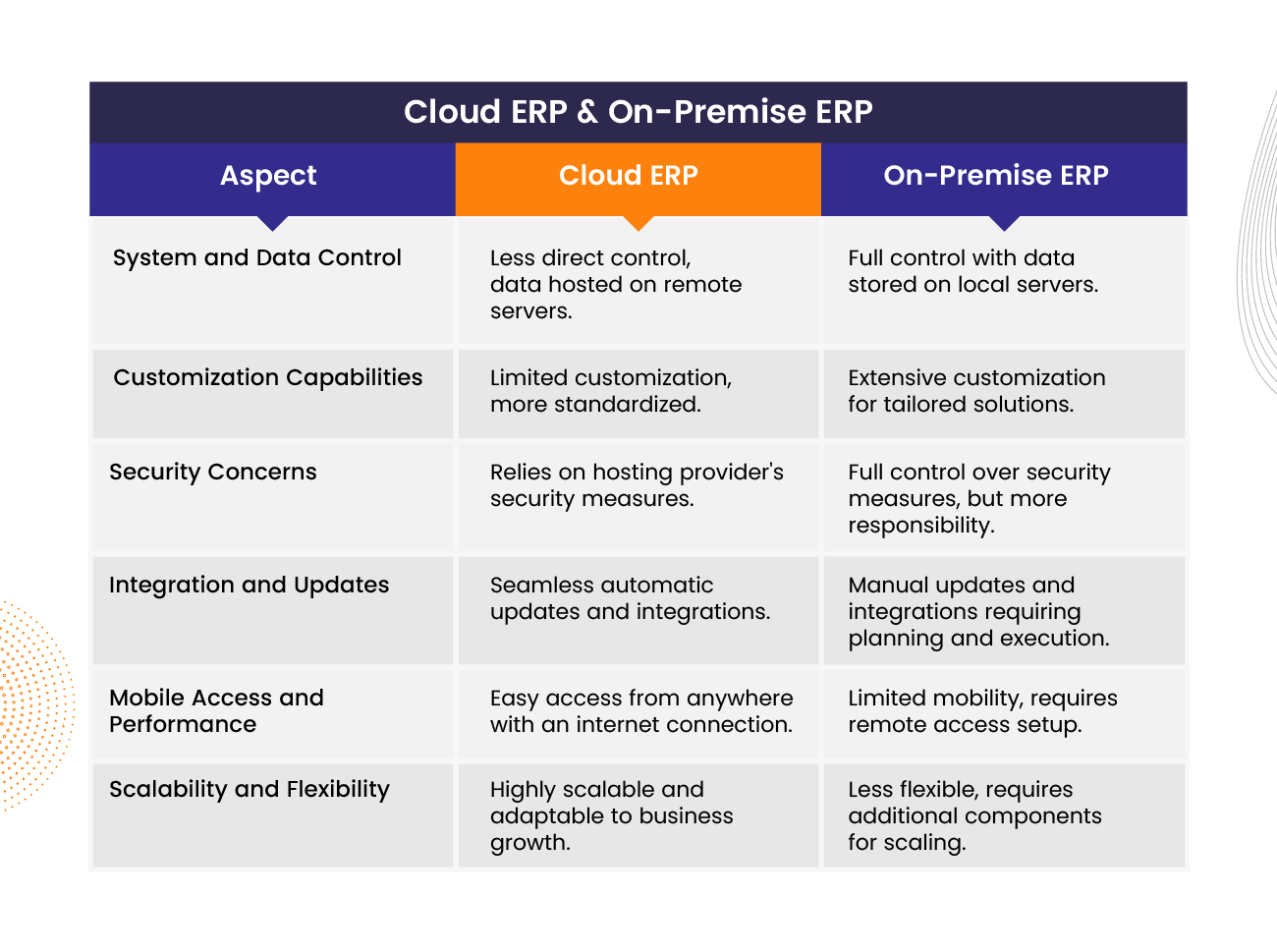
System and Data Control:
Cloud ERP and On-premise ERP differ significantly in terms of system and data control. In a Cloud ERP, your data and the ERP system itself are hosted on remote servers managed by a third-party provider. This means you have less direct control over the physical infrastructure.
On-premise ERP resides on servers located within your company’s physical premises, providing greater control over the system and data. This setup allows for direct management and customization of the infrastructure according to specific business requirements.
Customization Capabilities:
When it comes to customizing your ERP system, On-premise ERP offers greater flexibility. You can tailor the software to fit your specific business processes and requirements.
This level of customization is often more limited in Cloud ERP solutions, as they tend to offer standardized functionality to cater to a broader range of businesses. In Cloud ERP, customization options may be confined to configuring settings within the provider’s framework.
Security Concerns:
Security is a paramount concern in ERP systems. With On-premise ERP, you have direct control over your data security. You can implement security measures based on your standards and compliance requirements.
In contrast, Cloud ERP relies on the security protocols implemented by the service provider. While reputable providers have robust security measures, some organizations may have concerns about storing sensitive data off-site. It’s essential to evaluate the provider’s data security practices and ensure compliance with relevant regulations.
Integration and Updates:
Integration in Cloud ERP systems is typically easier due to the standardized APIs and connectors provided by cloud service providers. On the other hand, integration in On-premise ERP systems can be more complex, requiring custom development and configuration to connect with other software and systems.
Updates in Cloud ERP systems are managed by the service provider and are automatically applied to all users, ensuring that everyone is using the latest version of the software. This process is seamless and minimizes disruptions to the business operations. Conversely, updates in On-premise ERP systems require manual installation and configuration by the organization’s IT staff. This process can be time-consuming and may involve downtime during the update process.
Mobile Access and Performance:
In today’s fast-paced business environment, mobile access and performance are vital. Cloud ERP excels in this aspect, offering anytime, anywhere access via an internet connection. It promotes remote work and collaboration, improving productivity.
On-premise ERP systems may limit access to on-site locations, which can hinder mobility and remote working capabilities. It often depends on your specific needs for mobile access and performance.
Scalability and Flexibility:
Scalability is the ability to adjust your ERP system as your business grows or changes. Cloud ERP provides high scalability, allowing you to add or remove resources quickly without significant upfront investments.
On-premise ERP may require more time and expenses for scaling, involving additional hardware, software licenses, and infrastructure components. It might not offer the same level of flexibility for rapid adjustments.
Read More: How Cloud ERP Benefits C-Level Executives
Implementation Process and Timeframe: Cloud ERP vs On-Premise ERP
Cloud ERP implementations are generally quicker and more streamlined. The process typically involves selecting the desired modules, configuring settings, and migrating data to the cloud environment. Since the infrastructure is managed by the provider, businesses can focus on software customization and user training. Implementations can be completed in as little as three to six months, making it a faster option.
On-premise ERP implementations tend to be more complex and time-consuming. They require setting up hardware, software installations, and extensive customization to align with specific business needs. This process can take anywhere from six months to a year or more. It involves thorough planning, testing, and coordination, often with the assistance of IT experts.
Total Cost of Ownership: Cloud ERP vs On-Premise ERP
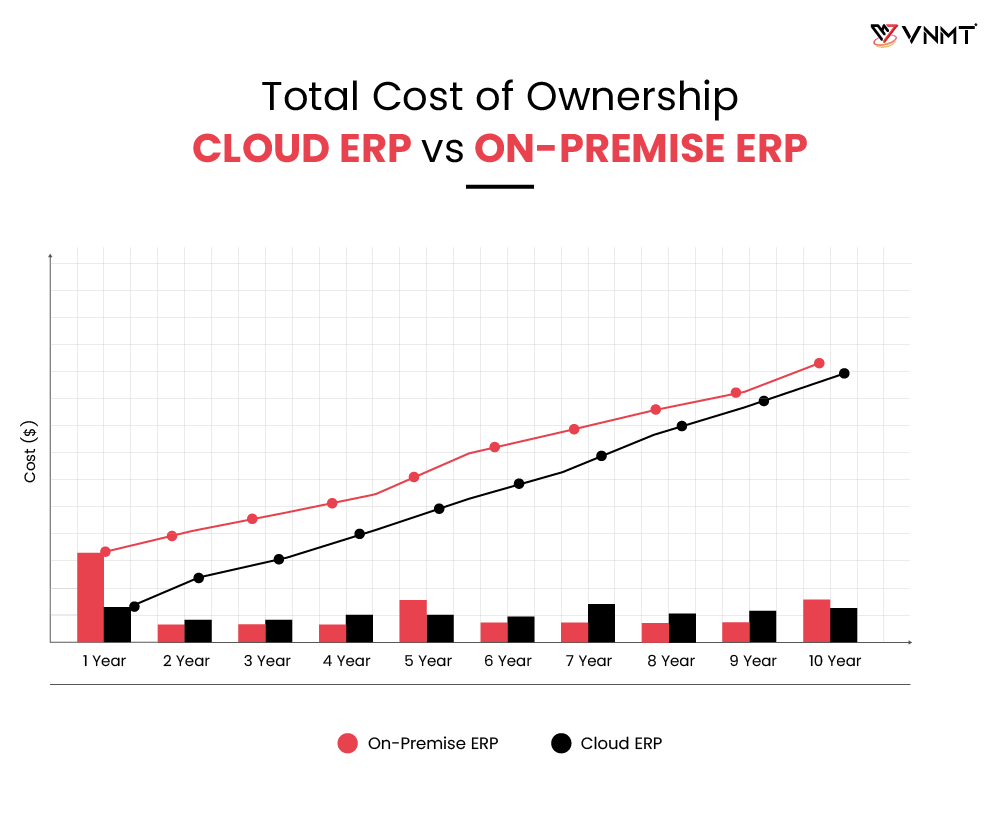
Cloud ERP systems offer lower upfront costs, with subscription-based pricing models. This reduces initial expenses for hardware, software licenses, and infrastructure. However, over time, cumulative subscription fees may surpass the upfront costs of an on-premise solution. Nonetheless, cloud ERP provides better financial predictability and scalability.
On-premise ERP systems require significant upfront investments in hardware, licenses, and infrastructure. While ongoing maintenance costs are lower, businesses must budget for internal IT resources, system updates, and hardware upgrades. The long-term total cost of ownership tends to be higher due to these factors, making it a costlier option in the long run.
Let’s calculate the estimated total cost for both the cloud-based and on-premise ERP solutions for a small business over a five-year period:
Cloud-Based ERP Total Cost:
- Subscription Fees over 5 years: $60,000 – $300,000
- Implementation Costs: $10,000 – $50,000
- Scalability: Variable based on business growth
- Maintenance & Support: Included in the subscription fees
- Total 5-Year Cost Range: $70,000 – $350,000
On-Premise ERP Total Cost:
- License Costs: $40,000 – $100,000
- Infrastructure: $20,000 – $50,000
- Implementation Costs: $30,000 – $80,000
- Maintenance & Support: $25,000 – $100,000 (estimated over 5 years)
- Total 5-Year Cost Range: $115,000 – $330,000
The setup cost for cloud ERP tends to be higher than for on-premise solutions. However, when considering the long-term expenses, on-premise ERP systems become more costly due to infrastructure and hardware expenses and maintenance requirements.
ROI and Long-Term Value: Cloud ERP vs On-Premise ERP
Cloud ERP systems often offer a faster ROI due to lower upfront costs and faster implementation. They provide long-term value through scalability, mobility, and automatic updates. Businesses benefit from reduced IT maintenance expenses and can adapt more swiftly to changing needs, ultimately improving efficiency and competitiveness.
On-premise ERP systems may have a longer ROI timeline due to higher upfront costs and slower implementation. While they offer control and customization, the long-term value depends on the ability to manage ongoing IT expenses effectively. They may be suitable for businesses with specific requirements and resources for comprehensive customization and maintenance.
To calculate the return on investment (ROI) for the ERP implementation we’ll use the following formula: = (total value of investment − total cost of investment) /total cost of investment ×100%
So, for the above examples:
The ROI range for Cloud-Based ERP is approximately 42.86% to -14.29%, depending on the estimated total value of investment and for on-premise ERP is approximately 30.43% to 6.06%.
Advantages of Cloud ERP
- Lower Upfront Costs and Subscription Model: Cloud ERP eliminates the need for hefty upfront investments. You pay a regular subscription fee, making it budget-friendly and predictable.
- Scalability and Flexibility: Cloud ERP offers easy scalability. You can add or reduce resources as your business grows or changes, ensuring you’re always the right size.
- Automatic Updates and Compliance: Providers handle updates and ensure compliance, saving you time and ensuring you’re always using the latest, compliant software.
- Enhanced Mobility and Remote Access: Cloud ERP allows access from anywhere with an internet connection, promoting remote work and boosting productivity on the go.
The cloud ERP market is expected to boom, reaching $140.14 billion by 2030, a massive growth from $49.80 billion in 2023.
Advantages of On-Premise ERP
- Greater Data Control and Security: On-premise ERP provides direct control over data security, ideal for businesses with stringent security requirements.
- Customization and Tailored Solutions: You have more freedom to customize on-premise ERP, creating tailored solutions that match your unique processes.
- One-time Investment and Cost Effectiveness Over Time: While upfront costs are higher, on-premise ERP can be cost-effective in the long run, especially for larger organizations.
- Performance and Offline Access: On-premise ERP often offers high performance and doesn’t rely on constant internet access, making it suitable for environments with limited connectivity.
Challenges and Drawbacks of Cloud ERP
- Internet Dependency: Cloud ERP relies on a stable internet connection for access. Any disruptions or outages can hinder the system’s availability, impacting business operations. Companies operating in areas with unreliable or limited internet access may face challenges.
- Limited Customization: Cloud ERP solutions often provide standardized functionality, limiting the degree of customization. While some configuration options are available, highly specific or complex processes may require more extensive customization, which could be constrained in a cloud environment.
- Vendor Lock-In: Choosing a cloud ERP provider may result in vendor lock-in. Migrating data and processes to another provider or returning to an on-premise solution can be complex and costly. Businesses must carefully assess vendor contracts and exit strategies.
Challenges and Drawbacks of On-Premise ERP
- High Initial Costs: On-premise ERP involves significant upfront expenses, including hardware purchases, software licenses, and infrastructure setup. These costs can be a barrier for smaller businesses with limited budgets.
- Maintenance and Upgrades: Businesses are responsible for managing on-premise ERP system maintenance, including applying patches, updates, and security enhancements. This requires dedicated IT resources and can lead to additional costs and complexity.
- Scalability Issues: Scaling an on-premise ERP system can be challenging and expensive. As businesses grow or require additional resources, they must invest in additional hardware, software licenses, and infrastructure components. This process may not be as flexible as scaling with cloud ERP solutions.
Which Is Right for Your Business? Cloud ERP or On-Premise ERP?
Choosing between cloud ERP and on-premise ERP should be a well-informed decision that aligns with your business’s unique needs and objectives. Here are key factors to consider:
Assessing Business Needs and Objectives: Start by assessing your organization’s specific requirements. Consider factors like the size of your business, industry, and growth potential. Cloud ERP systems offer scalability and flexibility, making them suitable for small to mid-sized businesses looking for cost-effective solutions and rapid deployment. On the other hand, larger enterprises with complex processes may find on-premise ERP more suitable due to customization options and control.
Considering Industry and Data Sensitivity: Evaluate your industry’s compliance and data sensitivity requirements. Some industries, like healthcare and finance, may have strict regulations governing data security and privacy. On-premise ERP offers greater control over sensitive data, making it a preferred choice for businesses in highly regulated sectors. Cloud ERP providers must demonstrate robust security measures to meet industry standards.
Financial Capacity and Long-Term Strategy: Examine your financial capacity and long-term strategy. Cloud ERP systems often have lower upfront costs and predictable subscription-based pricing, making them attractive for businesses with limited budgets. Conversely, on-premise ERP involves higher initial investments but offers greater control over costs in the long run. Consider your growth plans and whether scalability and flexibility are critical for your strategy.
Ultimately, the decision should align with your business’s growth trajectory, data security requirements, and budget constraints. It’s essential to perform a comprehensive analysis, possibly involving key stakeholders, to determine which ERP solution will best support your organization’s success.

Struggling To Identify The Ideal ERP for Your Business?
Stuck in the mud of outdated systems? Let the Cloud lift you to new heights!
Get in touch with our ERP consultants today to begin your ERP journey towards enhanced efficiency and growth. Our team can provide expert guidance tailored to your business’s unique circumstances, helping you navigate the complexities of choosing the right ERP.
